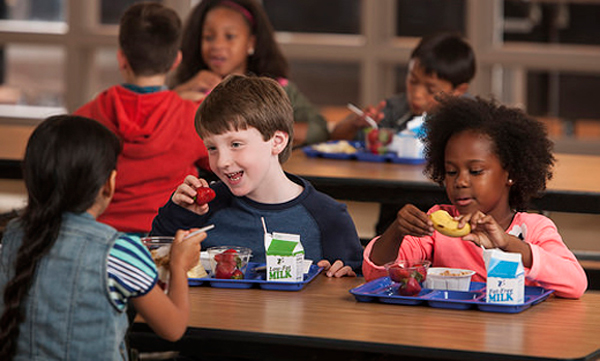- La Feria Community Holds Succesful Business Mixer Event
- Little Nashville to Take Place in Downtown Mercedes
- Lions Basketball Captures District Gold
- La Feria ISD Students Compete in Regional Chess Tournament
- Lions End First Half of 32-4A on a High Note
- La Feria ISD Held Another Successful Parent Conference
- Strong Appearance for Lions at Hidalgo Power Meet
- LFECHS Students Get to Meet Local Actress
- Students Participate in Marine Biology Camp
- Two LFECHS Students Qualify for All-State Band
More Children Benefiting from Better Nutrition Standards
- Updated: April 17, 2015
by Eric Galatas/TNS
AUSTIN, Texas – School breakfast is getting healthier and reaching more children, according to new analysis by the Food Research and Action Center.
The Healthy, Hunger-Free Kids Act was passed in 2010 to improve nutrition standards, and overall kids aren’t turning up their noses. In the most recent school year, 1.8 million students ate breakfast at school in Texas, up by 33,000 over the previous year. Aaron Herrera, CEO at Hunger Free Texans, says creative tactics used by schools are part of the success.
“We see innovations such as breakfast on the bus, so it starts when the kids leave the home,” he says. “There are even a lot of schools promoting breakfast in the classroom.”

More children are getting their first meal of the day at school and benefiting from better nutrition standards, according to a new report from the Food Research and Action Center. Photo courtesy of U.S. Department of Agriculture.
Herrera notes that when breakfast is only served in the cafeteria at a specific time, children who arrive just as the school bell rings miss out. According to the report, as nutrition standards were rolled out, participation increased for free and reduced-priced breakfasts. The number of students able to pay most of the cost remained stable.
Herrera says when you can give more students access to a nutritious breakfast, not only are fewer kids going hungry, it’s also helping improve their health, behavior in school and ability to learn.
“I think there’s been more of a connection with school breakfast, that ‘a-ha’ moment that if we just feed them a good breakfast, that will help them with better grades,” says Herrera.
More than 8,000 Texas schools served breakfast in the last school year, and nationally more than 11 million low-income students ate their first meal of the day at school, up by 320,000 over the previous year. Herrera says that number could continue to climb with a relatively new USDA program called Community Eligibility, which allows schools to feed all students free of charge in areas made up primarily of low-income households.


